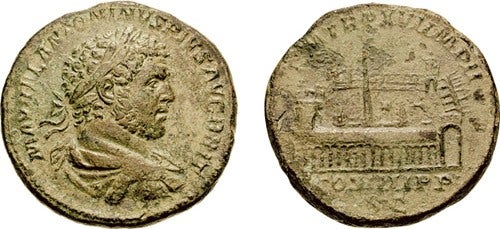Heads. Heads. Heads. Heads. Heads. Heads. Heads. Heads. Heads. Heads. Heads, again.
Tom Stoppard’s classic play Rosencrantz and Guildenstern Are Dead opens with two Elizabethan players, some well-stocked prop moneybags, and the flip of a coin that lands as heads. Again. And again. And again.
In Stoppard’s scene, the bit actors Rosencrantz and Guildenstern kill time during a production of Shakespeare’s Hamlet by betting on coin tosses. Guildenstern flips a florin and Rosencrantz predicts that it will land as heads. It does. Guildenstern spins another coin and it lands as heads again. After Rosencrantz has successfully bet heads 77 times in a row, Guildenstern proclaims that, “A weaker man might be moved to re-examine his faith, if in nothing else at least in the law of probability.” He ends up flipping heads 92 times in a row. Forsooth, what are the odds?
The likelihood of Rosencrantz and Guildenstern’s scenario actually happening is 1 in 5 octillion, a probability so small that it is practically impossible to imagine. According to NOAA’s website, it is more likely that a person in the United States will be struck by lightning four times in one year than repeat the results of Guildenstern’s coin tossing. The 92 heads in a row is, however, more likely to happen than randomly shuffling a deck of cards and discovering that they appear sorted.
More interesting than sussing out precise odds, however, are the premises of the scene. What makes it so absurd? What do we “know” about the probable outcome of tossing a coin that lets us “get” Stoppard’s joke? We know that the odds of a coin toss ought to be a 50/50, split between heads and tails, so surely there must be something wrong with the universe—something unfair?—for Rosencrantz and Guildenstern’s scenario to play out.Previously:
The Mystique of the Biased Coin
The toss of the coin functions as cultural shorthand. A flipped coin is assumed to be an unbiased way to pick between two possible outcomes, since both parties involved in the toss have an equal chance of winning.
So long as the coin is a fair coin, that is. A fair coin is one where either side of the disk has an equal chance of turning up, according to the probabilities worked out by the seventeenth-century Swiss mathematician Jakob Bernoulli. It means that one side can’t be favored, whether it’s inadvertent (say, the manufacture of the coin adds weight to one side, favoring a flip to one side over the other) or intentional (a two-headed coin). When an unfair coin is tossed, it conveys an unfair manipulation of the world to shift the odds in someone’s favor.
In other words, Guildenstern and other flippers of coins have a profound faith that odds of a coin toss are split 50/50, between heads and tails. Part of what makes Stoppard’s scene so compelling is that it plays to the audience’s skepticism that someone could win 92 tosses in a row by betting heads. Sure, Rosencrantz and Guildenstern’s epic coin tossing demonstrates that such a thing is possible, we tell ourselves—it’s just not very probable.
A Short History of Coin Flips
Tossing a coin to decide an outcome is nothing new. Since the Roman Empire and throughout the Middle Ages of Europe, a coin toss has offered a way to decide between two alternatives. Known as “heads or ships,” in reference to the images that appeared on the Roman sestertii, the coin toss was a children’s game of chance as well as a gambling game among the patrician elite. Legend has it that Julius Caesar would settle legal disputes with a coin toss.
A medieval variant called “cross and pile” was a favored game for children (and even young apprentices) during the Middle Ages. In the late thirteenth-century, King Edward II’s own exchequer records the royal losses of “cross and pile” when the king played against domestic servants.
In more recent eras, the coin became linked to probability, statistics, and mathematical modeling. In the eighteenth century, for example, famed mathematician and naturalist Georges-Louis Leclerc, count de Buffon, tossed a coin 4,040 times, which resulted in 2,048 heads, or very close to half the throws. (The relative frequency was ~.5069.) In the early twentieth century, the English mathematician Karl Pearson tossed a coin 24,000 times, with 12,012 of the throws coming up heads. (The relative frequency of Pearson’s experiment was ~.5005, even closer to the 50/50 odds we associate with a fair coin. Following such demonstrations, the coin became, in essence, the smallest random number generator available....MUCH MORE
Think a coin toss has a 50-50 chance? Think again.
Gamblers Take Note: The Odds in a Coin Flip Aren't Quite 50/50
